Discover the Most Talkative Pet Birds
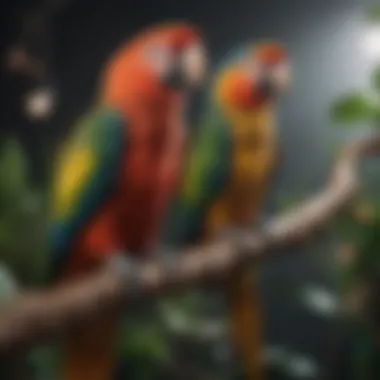

Intro
Birds have captivated humans for centuries, not only because of their vibrant colors and exquisite beauty but also due to their striking ability to communicate. When it comes to pet birds, some species stand out due to their remarkable vocalizations and ability to mimic human speech. This article places a spotlight on these talkative companions, offering insights into their characteristics, care considerations, and the social interactions that define their relationships with humans.
Understanding these vocal birds is essential for proper care and fostering meaningful bonds. Equipment, environment, and social engagement contribute significantly to a bird's overall behavior and well-being. Through this exploration, potential and existing bird owners will gain substantial knowledge to enhance communication and companionship with their avian friends.
Care Tips
Owning a talkative bird is not just about enjoying their vocal talents; it involves a commitment to their overall health and happiness. Here are key care tips to follow:
Daily Care Routines
Establishing a daily routine is crucial for your bird's comfort and security. Regular feeding, social interaction, and consistent schedule promote mental health. Spend time with your bird each day, as this companionship fortifies your bond.
Cage Setup and Maintenance
The cage must be spacious and stimulating. Include perches of varying sizes and materials to avoid foot problems. Regularly check for worn items, and change the cage liner weekly. Clean food and water containers daily to maintain hygiene.
Hygiene and Cleaning Practices
Birds require a clean environment to thrive. Use mild, bird-safe cleaners for the cage and avoid harsh chemicals. A well-maintained habitat helps prevent diseases, ensuring your bird remains healthy.
Seasonal Care Adjustments
Seasons can affect your bird's health. In winter, provide a heat source and avoid draughts. In summer, ensure there is sufficient shade and fresh water. Adjust diets according to seasonal fruit availability.
Behavioral Insights
Understanding a bird's behavior allows you to enhance your interaction with them. Knowing what your bird communicates through body language can prevent misunderstandings.
Understanding Bird Body Language
Birds express themselves using various postures and movements. For instance, a puffed-up bird may feel threatened, while a bird with relaxed feathers is often at ease. Observing these cues helps you respond appropriately to their needs.
Common Behavioral Issues and Solutions
Issues like excessive screaming or feather plucking can arise. Identifying triggers is vital. For instance, boredom might lead to screaming. Providing toys, and interaction can alleviate such problems.
Positive Reinforcement Techniques
Encouragement of desired behavior through rewards is key. Utilize treats or verbal praise when your bird mimics words or performs tricks. This builds confidence and strengthens your relationship.
Social Interaction Needs
Birds are social creatures. Interaction is necessary for their emotional health. Engage with your bird daily. Consider adopting a second bird for companionship if you are often away from home.
Nutrition Guides
Proper nutrition is fundamental for a bird's vocal health. Selecting the right diet supports not only their physical well-being but also their ability to vocalize.
Essential Diet Components
A balanced diet should include a variety of seeds, pellets, and fresh fruits and vegetables. Research specific dietary needs based on the species. A well-rounded diet enhances vocal performance and overall health.
Safe and Toxic Foods
Not all foods are safe for birds. Common safe options include apples, carrots, and leafy greens. However, avoid avocado, chocolate, and caffeine as they are toxic to birds.
Supplements and Treats
Occasional treats are great for bonding. Use them sparingly and ensure they are healthy. Additionally, consider supplements for vitamin deficiencies if needed.
Feeding Strategies for Different Species
Each bird species has unique requirements. Research your specific bird to tailor meal portions and items. Consult an avian vet if you have questions about appropriate feeding.
Wellness and Health
Keeping a close eye on your bird's health can prevent serious issues down the line. Establish a routine health plan.
Routine Health Checkups
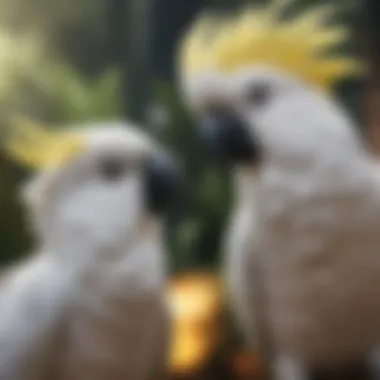

Regular vet visits are important for monitoring your bird's well-being. Scheduled examinations can catch underlying problems before they develop into major issues.
Identifying Symptoms of Illness
Learn to recognize signs of distress in your bird. Symptoms may include changes in eating habits, lethargy, or unusual vocalizations. Early detection is crucial for effective treatment.
Preventative Care and Vaccinations
Discuss vaccination options with your veterinarian. Preventative measures are integral in keeping your bird healthy.
Mental and Emotional Well-being
Mental stimulation is as important as physical care. Engage your bird in play and social interaction. This keeps their mind sharp and prevents negative behaviors.
Enriching Activities
Offering varied activities enriches a bird’s life. A simple routine can turn into a stimulating regime.
Toys and Playtime Ideas
Provide assorted toys to prevent boredom. Rotate toys regularly to keep things fresh. Interactive toys can encourage problem-solving.
Training and Tricks
Training your bird to perform tricks is rewarding. Begin with simple commands before progressing to more complex ones. This not only entertains but also strengthens your bond.
Outdoor Activities and Interaction
Supervised outdoor time can provide mental stimulation. Consider harness training your bird for safe exploration outside.
DIY Projects for Mental Stimulation
Creating your enrichment items can be enjoyable. Use materials like cardboard and natural willow branches to craft foraging toys.
Engaging in regular activities fosters a bond with your bird, enhancing both your experiences and theirs.
By putting into practice the care tips and insights detailed above, you can create a nurturing environment that allows your talkative bird to thrive, ensuring a fulfilling companionship.
Foreword to Talkative Birds
Pet birds have a rich history of companionship with humans, largely due to their remarkable vocal abilities. This section emphasizes the importance of understanding talkative bird species, as vocalization significantly enhances the bond between birds and their owners. Through exploring this topic, we will uncover various aspects of avian communication, vocalization significance, and how these factors contribute to pet bird ownership.
Understanding Avian Communication
Avian communication is a complex and fascinating subject. Birds communicate through a variety of means including vocalizations, body language, and behavior. Each species possesses unique sounds, ranging from chatter to mimicking human speech. Understanding these forms of communication is essential for bird owners. It assists them in interpreting their pets' needs and moods, improving care approaches.
Effective communication with a pet bird can lead to a stronger bond and healthier relationship.
Birds often vocalize to express emotions such as excitement, fear, or even curiosity. The ability to recognize these signals can help owners respond to their pets more appropriately. Furthermore, interaction with other birds can also influence how vocal a pet becomes. Well-socialized birds often develop distinct communication styles.
Significance of Vocalization in Birds
Vocalization serves crucial functions in avian life. For social species, like the African Grey Parrot and Amazon Parrots, talking is often a part of their daily interactions. Birds use sounds to maintain group cohesion and express individuality. In a domestic setting, vocalization helps in establishing a connection with their human companions.
Key reasons why vocalization is significant include:
- Social Interaction: Vocalization fosters communication and interaction among birds and between birds and humans.
- Emotional Expression: Birds express their feelings through sounds, alerting owners to their emotional states.
- Bonding: The ability to converse or mimic enhances the bond between birds and their owners, leading to a fulfilling companionship.
Understanding these aspects is vital for any potential bird owner. It ensures that one is prepared to engage with their feathered friend in a meaningful way, ultimately enriching both the owner's and the bird's life.
Popular Talkative Bird Species
Understanding the specific species of pet birds known for their vocalization is essential for potential bird owners. Each species comes with unique characteristics, benefits, and considerations that inform decisions about care, training, and interaction. When one chooses a bird, it is crucial to recognize the vocal talents of various species as they significantly impact companionship and engagement experiences.
African Grey Parrot
Vocal Skills and Mimicry
The African Grey Parrot is highly esteemed for its remarkable vocal skills and mimicry. This species is known to possess an advanced level of intelligence, enabling it not only to mimic human speech but also various sounds from the environment. The ability to mimic specific phrases and even the tone in which they are spoken adds a layer of depth to their communication skills. This characteristic makes African Grey Parrots a popular choice for those seeking an interactive bird experience. However, their vocal skills require mental stimulation and social interaction to flourish, thus highlighting the importance of early engagement in their development.
Care Requirements
Caring for an African Grey Parrot involves meeting specific dietary, environmental, and social needs. These birds thrive on a balanced diet that includes high-quality pellets, fresh fruits, and vegetables. Their requirements also extend to adequate space in a cage and opportunities for daily exercise outside of it. Proper care ensures that the bird remains healthy and vocalizes appropriately. Neglecting their care can lead to behavioral issues or health problems, which emphasizes the commitment required to own such a talkative pet.
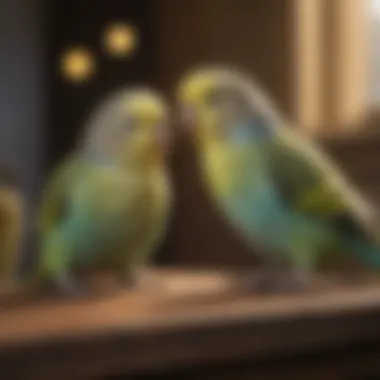
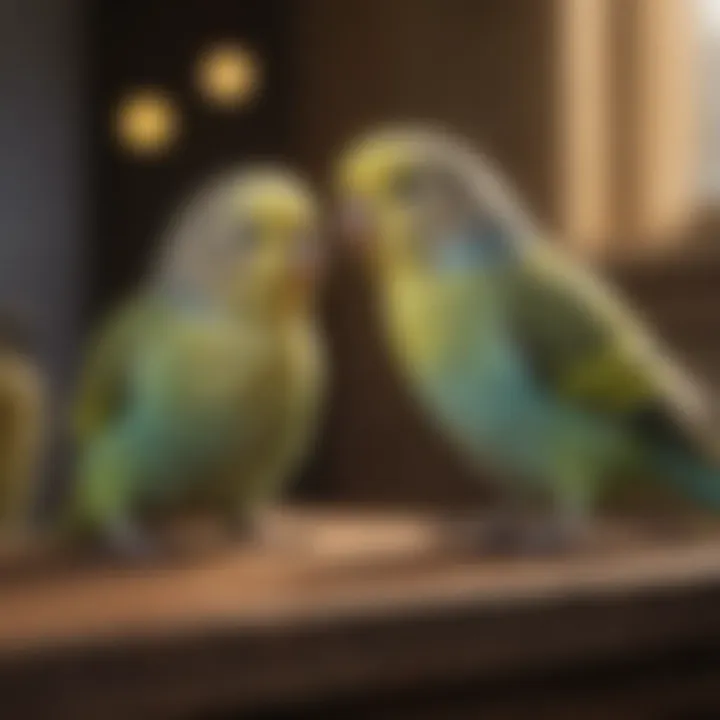
Social Interaction
Social interaction is a key aspect of life for the African Grey Parrot. These birds are naturally social creatures, needing consistent interaction with their owners to maintain their mental health and improve their vocal skills. Building a bond through time spent together can enhance their vocalization abilities. However, these birds can become overly attached and may develop anxiety when left alone, which necessitates careful consideration of their social needs when bringing one into your home.
Amazon Parrots
Distinctive Vocal Patterns
Amazon Parrots are known for their distinctive vocal patterns, which include rich, varied sounds. They possess an innate ability to copy the sounds made around them, making them amusing and entertaining companions. Their vocalizations often include human speech that is clear and understandable. The engaging nature of their vocal patterns makes them an attractive choice for pet owners. However, these patterns can vary significantly between individual birds, adding an element of unpredictability.
Behavioral Traits
The behavioral traits of Amazon Parrots are notable for their lively and curious disposition. This species tends to be playful and can be very affectionate towards their owners. Engaging with them helps sustain their enthusiasm, and they often enjoy playing with toys or interacting with their environment. While their energetic nature can be a joy, it also requires understanding and managing their behavioral needs to prevent destructiveness.
Training Tips
Training Amazon Parrots requires patience and consistency. Using positive reinforcement methods, such as treats and praise, works well in encouraging desired vocal behaviors. Start with simple commands and gradually introduce more complex phrases as they become proficient. Training is beneficial not only for enhancing their vocal skills but also for fostering a healthy relationship between the bird and its owner. Both novice and experienced owners can find success with these training strategies, leading to a more interactive companion.
Budgerigar
Charming Chatterboxes
Budgerigars, often referred to as "budgies," are charming chatterboxes, celebrated for their endearing vocalizations and playful nature. These small birds can learn numerous words and phrases, making them delightful companions in a home. Their social character encourages vocal interaction with their owners. However, they require regular interaction to become comfortable with speaking. While charming, they may not speak as clearly as larger parrot species, but their sweet and melodic sounds make them beloved pets.
Creating a Stimulating Environment
Creating a stimulating environment is vital for the mental and physical health of budgerigars. A spacious cage equipped with various toys, perches, and activities encourages natural behaviors and reduces boredom. Offering opportunities outside the cage for supervised exploration is essential for their well-being. An enriched environment fosters vocalizations, allowing these birds to express themselves freely and engage more actively with their owners.
Social Dynamics with Humans
Budgerigars thrive on social interaction, both with other birds and with humans. Establishing strong relationships with their owners can lead to increased confidence in their vocal abilities. Owners should spend quality time talking to and handling their budgies. However, it’s crucial to remain mindful of their social dynamics, as they can become anxious or distressed without sufficient companionship, highlighting the need for a balanced social environment.
Cockatoos
Vocalization and Emotional Expression
Cockatoos are remarkable for their vocalization and emotional expression, often vocalizing to convey feelings. Their ability to produce a range of sounds, from soft coos to loud screams, reflects their emotional state. The emotional depth of their vocalizations makes them unique. However, it is important to note that these birds may call loudly when they require attention, which might not be suitable for every household.
Intellectual Engagement
Intellectual engagement is essential for cockatoos, as they are intelligent and require stimulation to remain happy. They can solve puzzles and engage in complex tasks, showcasing their impressive cognitive abilities. This necessity for mental challenges can lead to a rewarding experience for owners who invest time in interactive play and training, ensuring a fulfilling relationship.
Care Considerations
Caring for cockatoos includes meeting their specific needs for diet, habitat, and social interaction. A diverse diet incorporating fresh fruits, vegetables, and high-quality pellets is important for their health. Additionally, they require ample space and opportunities for exercise, along with affectionate handling to thrive emotionally. These requirements indicate that potential owners should be prepared for the commitment necessary to maintain a healthy and vocal cockatoo in their home.
Eclectus Parrots
Unique Vocal Abilities
Eclectus Parrots stand out for their unique vocal abilities, characterized by clear, articulate speech. They tend to develop a wide vocabulary, often mimicking songs and phrases with ease. Their calm demeanor complements their vocal skills, making them delightful companions. However, it is important to note that not all Eclectus Parrots will reach the same level of vocalization, as individual differences do exist.
Feeding and Diet
The feeding and diet of Eclectus Parrots play a critical role in their overall health and vocal performance. They require a diet rich in fruits, vegetables, and specific nutrients tailored to their needs. The right diet fosters their health and vibrancy, positively influencing their vocal abilities. An improper diet can lead to health issues that affect their speech and overall well-being.
Environmental Needs
Understanding the environmental needs of Eclectus Parrots is crucial for their care. They need a spacious cage and plenty of toys to interact with. Environmental enrichment, including toys that challenge their minds and opportunities for socialization, enhances their quality of life. An effective environment encourages the expression of their vocal skills, ensuring they can thrive in a domestic setting.
Factors Influencing Vocalization
Understanding the factors that influence vocalization in pet birds is essential for potential and current bird owners. Various elements contribute to the vocal skills of these animals, and recognizing them can help in fostering better communication. This section covers key aspects such as age and development, social interactions, and the environment in which birds are kept.
Age and Development
Age plays a critical role in a bird's vocal abilities. Young birds, or chicks, experience a sensitive period for learning sounds and words. This stage usually occurs between 3 and 6 months of age, where they are like sponges, absorbing sounds from their surroundings. The early developmental phase is crucial; birds that are not exposed to diverse sounds during this time may have limited vocal skills in later stages of life.
As birds mature, their vocal characteristics may evolve. For example, an African Grey Parrot may start mimicking phrases more accurately as it grows older. Adult birds often display a greater vocal range compared to their younger counterparts. However, they may become less interested in learning new sounds if they did not develop strong vocal habits during their formative years. Knowing this helps owners to engage in consistent communication early on, promoting a lifelong ability for vocal interaction.
Social Interactions
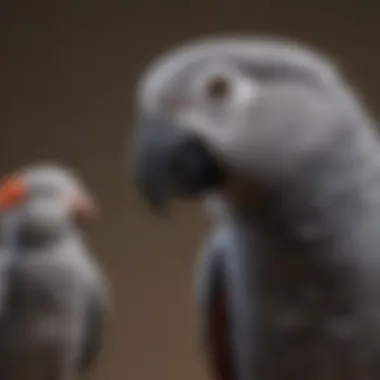
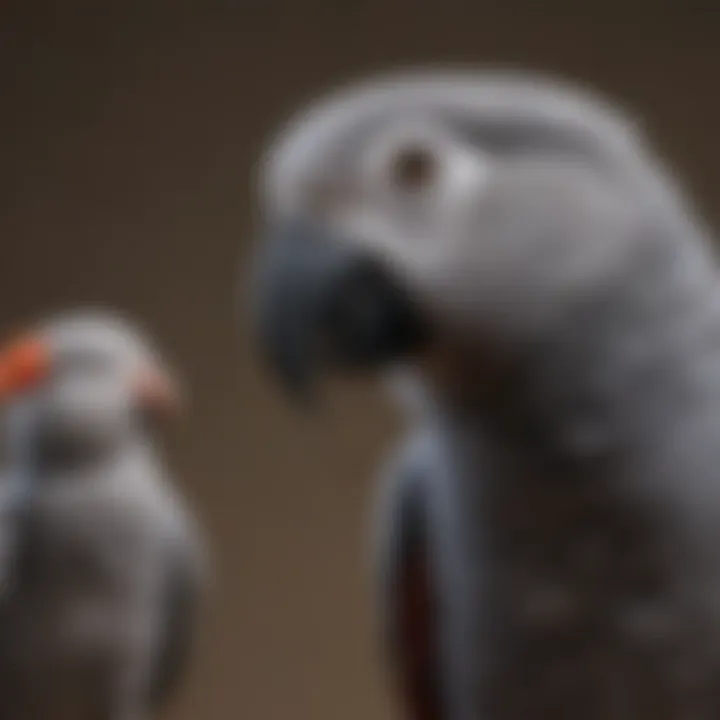
Social interactions significantly impact how talkative a pet bird can be. Birds are inherently social creatures and thrive on interaction with their flock, which in a domestic setting includes their human companions. A lack of interaction can lead to boredom, which may decrease vocalization. Owners who talk, sing, or play music around their birds can stimulate them to respond vocally. The more engaged a bird feels, the more it will want to vocalize and mimic.
When introducing new sounds or phrases, consistency is key. Repetition creates recognition and encourages birds to mimic sounds. Additionally, spending quality time with birds strengthens their confidence and vocal skills. For instance, Amazon Parrots are known for their distinctive, unique vocal patterns, and they tend to thrive when integrated into a nurturing social environment.
Environment and Enrichment
The environment where a bird resides can substantially affect its vocal abilities. A stimulating environment encourages exploration and interaction, leading to increased vocalization. Birds living in barren or quiet settings may not feel the need to vocalize, whereas those in enriched environments with toys, perches, and interaction opportunities often display greater vocal behavior.
Providing enrichment activities helps activate a bird's mental faculties, fostering a setting where it feels comfortable expressing itself. Think of adding swings, mirrors, or other interactive toys that draw attention. Birds like Cockatoos and Eclectus Parrots may show enhanced talkative behavior when exposed to diverse stimuli.
"An enriched environment not only keeps birds engaged but also contributes to their overall well-being and vocal development."
Developing Communication Skills
Developing communication skills in pet birds is not just about their ability to mimic sounds or words. It encompasses a broader interaction that fosters a strong connection between the bird and its owner. Engaging in meaningful dialogue with your avian companion can enrich both the bird’s life and your own. Understanding and facilitating communication can lead to a rewarding companionship, where the bird feels more secure and the owner enjoys a deeper bond with the pet.
Building a Bond with Your Bird
The relationship between a bird and its owner can resemble that of friendships among humans. Building a bond requires time, patience, and dedication. Establishing trust is foundational. Speak to your bird softly and consistently, introducing yourself and your routine. Regular interaction helps them learn your voice, creating a sense of comfort and familiarity. Treats can also significantly enhance this bond. Positive reinforcement through small rewards can motivate your bird to respond to you, fostering an environment of trust.
Spending time outside of normal interactions is important too. Hold your bird, allow it to sit on your shoulder, or simply be present in the same room. Birds are social creatures, so engaging with them in a relaxed manner helps solidify the relationship.
Training Techniques for Encouraging Speech
Training techniques play a critical role in encouraging vocal abilities among pet birds. There are various methods that can effectively promote speech.
- Modeling Behavior: Repeating words or phrases consistently is crucial. This can be done by the owner speaking slowly and clearly. Choose words that have significance, like the bird’s name or common commands.
- Use of Media: Some pet owners find success using recordings of speech. There are apps and devices available designed to expose birds to a diverse range of sounds.
- Playful Sessions: Incorporate games that involve talking, such as interactive toys that mimic sounds. This increases engagement levels.
Being patient is essential. Some birds may take longer to respond, so keep the training sessions brief and enjoyable to maintain their attention.
Consistency and Repetition
When fostering communication skills, consistency and repetition are critical. Vocal training should become a daily routine. Repetitive practice of words and phrases helps the bird to develop recognition and understanding.
- Schedule Training Sessions: Consistently set aside time each day specifically for training. This can create an effective learning environment.
- Repetition of Words and Phrases: Use the same commands in similar situations. This helps the bird make connections between what it hears and what happens in its environment.
- Positive Reinforcement: Always praise your bird when it tries to mimic sounds or responds to words, even if not perfectly. This reinforcement encourages further vocal attempts.
"With patience and practice, many birds can become highly vocal companions. The relationship evolves and deepens as your bird begins to communicate back."
A blend of dedication and a loving approach can result in meaningful interactions with your bird. By focusing on developing communication skills, both owners and birds can enrich their shared experiences.
Potential Challenges and Solutions
Navigating the journey of pet bird ownership presents not only joys but also some challenges. Understanding these potential issues can greatly enhance the experience for both the bird and its owner. This section sheds light on common obstacles faced by bird owners and offers viable solutions. Addressing these challenges early can foster a stronger relationship between the bird and its human companions.
Challenges in Training
Training a talkative bird can be a complex endeavor. Many factors influence a bird's ability to learn and mimic speech. One primary challenge arises from the individual personality of each bird. Some species, like African Grey Parrots, are naturally more vocal and eager to learn, while others might be more shy. This varies not only by species but also by the individual bird's temperament.
To effectively train your bird, consistent interaction is essential. Not all birds respond well to training techniques. If a bird feels threatened or anxious, it may resist attempts to communicate. Thus, establishing trust should be a priority. Take the time to bond through gentle handling and frequent conversation.
Another challenge is the duration and consistency of training sessions. Birds have short attention spans. Therefore, keeping sessions brief but frequent can lead to better results. Owners should also focus on positive reinforcement techniques. Using treats or praise can motivate birds. This forms a more encouraging environment for learning.
Vocalization Issues
Vocalization is a natural behavior in birds, but there may be concerns when it becomes excessive or problematic. Understanding what constitutes normal vocal behavior is crucial. Birds will vocalize for various reasons, including boredom, seeking attention, or ensuring their territory is recognized.
High levels of noise can be disruptive in a household. If a bird becomes overly vocal, owners should first assess the environment. A lack of interaction or stimulation may lead to this behavior. Providing toys and opportunities for play can reduce excessive calling. A dynamic environment encourages birds to express themselves through more varied sounds.
In some cases, specific health issues could also lead to changes in vocalization. If a bird suddenly stops talking or changes its vocal patterns, consulting a veterinarian is advisable. This helps ensure that no underlying health conditions are affecting their behavior.
Knowing the challenges of pet bird ownership is key. Solutions exist for training difficulties and vocalization problems. By acknowledging these issues and adapting strategies, bird owners will create a more harmonious atmosphere for themselves and their avian companions.
Ending
Understanding the nuances of owning talkative pet birds is crucial for a fulfilling experience with these avian companions. This article provided insights into not just the vocal abilities of various species but also the profound relationships bird owners can forge with them.
The Joys of Living with Talkative Birds
Having talkative birds at home offers numerous benefits. Their ability to mimic human speech can enhance the home atmosphere, making it lively and engaging. These birds communicate not just through words but through distinct vocal styles, showcasing their personality. Their social nature can serve as emotional support, and many owners find comfort in their interactions.
Engaging with a talkative bird encourages responsibility and routine. Birds like African Grey Parrots and Amazon Parrots require interaction to thrive. This need invites owners to spend quality time, fostering a bond that goes beyond pet ownership. Additionally, their chatter often results in amusing situations, though that can be a double-edged sword if noise levels become excessive.
Final Thoughts on Pet Bird Selection
Choosing the right talkative bird is essential. Prospective bird owners should consider their lifestyle, living space, and willingness to engage. Each species brings unique needs and characteristics. For instance, some birds may require more attention and social interaction than others. An informed choice contributes to long-term satisfaction.
Prospective owners should also think about their own ability to manage potential challenges, such as noise level and social interaction. Educating oneself about specific species and their needs will lead to healthier, happier birds. This way, both the pet and owner can enjoy a mutually enriching relationship, emphasizing the importance of understanding the foundational elements involved in pet bird ownership.
"Selecting the right pet bird can transform your home and social dynamic. Consider what fits best with your lifestyle and values."















